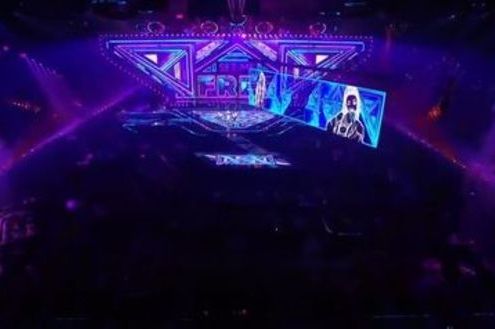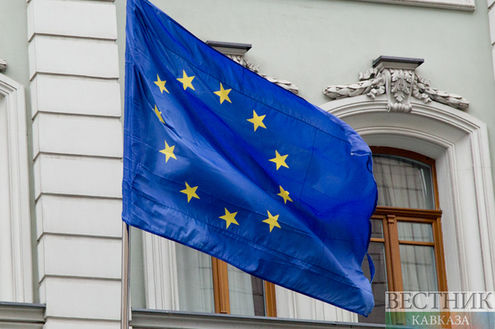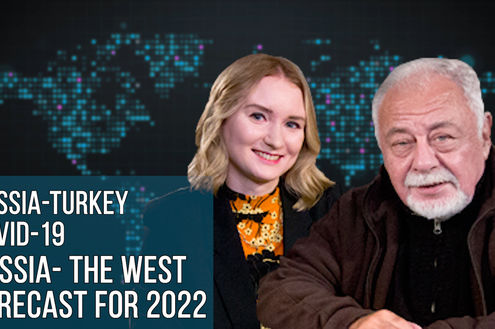Interview by Orkhan Sattarov, the head of the European Bureau of Vestnik Kavkaza
Bakhruz Abdolvand, a coordinator of the Berlin Center for Caspian Region Studies, an associated member of the German Society for Foreign Policy, described the prospects of Iranian gas on the European energy market after Iran’s possible return to the international arena from isolation and about the impact of the Ukrainian crisis on Iranian-Russian relations.
- Iran is sometimes called one of the possible alternatives for Russian gas in European capitals. Is the appearance of Iranian gas on the EU market real?
- In conditions when gas production in Europe is dropping and imports of liquefied gas would be very costly, it would be a logical and natural opportunity to strengthen the energy security of Europe by importing gas from Iran. It is the country that, according to the latest statistical data of British Petroleum, has the biggest reserves of natural gas in the world. For political reasons, this option has not been considered yet. For example, German Vice Chancellor Sigmar Gabriel recently noted, recalling the failed Nabucco project, that Iran should be at the other end of the gas pipeline. Then he says: “Mutual dependence of Europe and Russia in the energy sector is a good motivation not to take unappeasable positions on the Ukrainian issue and not to exacerbate the situation but, on the contrary, to remain in a dialogue.” In other words, the argument of Sigmar Gabriel is based on the assumption that Iran, despite its attractiveness for the European gas market, is still not a politically-acceptable option.
However, despite all the political complications, Iran is being mentioned ever more often as an alternative supplier of natural gas to Europe. Iran, in its turn, demonstrates great interest in exporting gas to Europe, while trying to rectify infrastructural flaws with the West.
- How does Iran plan to overcome the objective obstacles on its path to the energy market of Europe?
- In reality,implementation of the Iranian alternative is complicated by two factors. Firstly, the political position of the U.S. in the context of the Iranian nuclear program. Secondly, the weak infrastructural hold of Iran on the European market. Iranian exports are developing with focus on the Asian direction, where the constantly growing demand for gas determines the growth of prices for the “blue fuel.”
According to Abbas Maleki, the head of the Iranian Institute for Strategic Studies, Tehran will, on the one hand, try to use the pipeline infrastructure in the Turkmen direction for exports of its own gas to China. Iran has been importing a certain volume of gas from Turkmenistan, but now, taking into account its own rising extraction, Iran no longer needs Turkmen gas and can make reverse supplying. At the same time, Iran is making active efforts to form an infrastructural base to gain access to the European market through Turkey. According to existing Iranian-Turkish agreements, Iran supplies Turkey with up to 12-14 billion cubic meters of gas a year. At the recent Iranian-Turkish negotiations on gas prices, Tehran offered Ankara a deal. Within the framework of the new deal, Iran is ready to reduce the price for gas if Turkey agrees to import up to 20 billion cubic meters of Iranian gas. Such a deal is interlinked with construction of new transportation facilities. In this case, Turkey will benefit from reselling Iranian gas purchased at a beneficial price to Europe.
In the end, the fate of energy cooperation between Iran and Europe depends on progress in normalizing relations between Washington and Tehran. Such energy cooperation will gain real outlines only after the signing of an agreement on the atomic program of Iran and the lifting of sanctions. Recently the U.S. government has been showing more interest in easing the regime of sanctions against Iran. Representatives of the U.S. government urged European and American firms, especially in the sector of medicine (Bayer, GlaxoSmithKline), air freighting (Boeing, Lufthansa Technik), car manufacturing and the petrochemical industry, to renew cooperation with Iran. This, in its turn, encourages reaching an agreement on an atomic deal with Tehran.
- Does Washington have a clear strategic line for the gradual return of Iran from isolation?
- The geostrategic doubts and speculations of Washington about the period of relations with Iran after the nuclear deal, and simultaneous U.S. steps to reach it, show how diametrically different the evaluations by representatives of the American political, diplomatic, military and economic establishment on the issue of sanctions and the Iranian atomic program are. It shows how controversial American foreign policy is in general. Without a single verified foreign political line aimed for continuous and sustainable improvement of American-Iranian relations, any attempts to tie Iran in terms of energy and politically to Europe are destined to fail. So far, we cannot see any such policy from the U.S. side.
- Attempts to put Iran into the architecture of energy cooperation in Europe were made before, for example, when Tehran was offered to join the Nabucco project. What role did Russia play in the failure of the project?
- The Nabucco project had been on the European energy agenda since 2002. It played the central role in the European strategy of energy security, because LNG shipments from the U.S. and Canada were not even considered.
If Nabucco were to have been realized, Europe would have become much less dependent on supplies of Russian gas and would in fact have kicked the “gas ace” from the hands of Russia as an instrument for promotion of political interests. At the first phase of the Nabucco project, it was planned to achieve a capacity of 31 billion cubic meters of gas a year but, in the final phase of the project, the consortium was planning to deliver 100 billion cubic meters of gas a year from Azerbaijan and Iran to Austria’s Baumgarten. By the way, analysts were warning from the very beginning that the Nabucco pipeline project would be unrealizable without being filled by Iranian gas. But Western sanctions against Iran, that had been supported by Russia, were forcing the EU to give up on Iranian gas. Finally, it was decided to build the Trans-Adriatic Pipeline with the assistance of Azerbaijan and Turkey as an alternative to Nabucco.
Russia made maximum efforts to get rid of any competition with Gazprom from the very start of the Nabucco project. To torpedo Nabucco, Russia proposed its own project, South Stream, that would allow Gazprom to provide gas to Southern and Central Europe through the Black Sea. Despite high project expenses and difficulties in construction, Gazprom was constantly emphasizing that it gave full support to the project. Thus, the Russian gas giant managed to undermine all the efforts of the Nabucco concern to find suppliers and buyers for its own project.
Russia played delicately, following a dual policy. On the one hand, Moscow and Western countries backed the sanctions of the UN Security Council against the Iranian energy sector. But at the same time, Gerhard Schroeder, the executive director of the Nord Stream Concern, an ex-chancellor of Germany, tried to convince Iranians during his unofficial visit to Tehran in February 2009 that they should pick a share in the South Stream instead of Nabucco. The visit of Gerhard Schroeder took place before the talks between the EU and Iran on participation of Iran in Nabucco. Seven months later, Schroeder declared Nabucco a failed project because it could only be realized with Iranian gas. The late Victor Chernomyrdin, the ex-minister of the gas industry of the USSR and a former Russian prime minister, described Nabucco as a pipe “from nowhere to nowhere.” Azerbaijan, remaining the only gas supplier for Nabucco, decided not to risk relations with Russia and chose participation in a more modest project, the Trans-Adriatic gas pipeline. Thus, Moscow achieved a strategic victory in Southern and Central Europe.
Many analysts have a common opinion that South Stream is a political project, it is unprofitable, in terms of economics. But the fact is that Russia has been persistently promoting the project and gave it guaranteed political support, it became an adequate reason for investors to put bets on South Stream instead of Nabucco. As a result, Russia eventually won the gas poker.
- How does the Ukrainian crisis affect Russian-Iranian relations?
- In relations with Russia, Iran is trying to get as much benefit from current differences between Russia and the U.S. Moscow offered Iran a barter deal: it is ready to buy up to 500,000 barrels of oil in exchange for goods and services worth $1.5 billion every month. The proposal provoked criticism in Washington, which considers the deal offered by Russia to be de facto undermining the sanctions regime against Tehran. Iran, in its turn, will obviously use Russia’s proposal as an instrument for negotiations with the West.
The geostrategic position of Iran after the Ukrainian crisis has improved. Fears over a return of an enforced Russian presence in the South Caucasus and Central Asia encourages rapprochement of countries of the region with Iran. For example, the recent visit by the president of Azerbaijan to Iran happened right after annexation of Crimea in Russia. Right after the voyage, Russia starts military drills in the Caspian. In addition, Baku fears that Georgia, a transit state for Azerbaijan, would be destabilized, as was hinted by Russian Foreign Minister Sergey Lavrov in one of his speeches.
Interview by Orkhan Sattarov, the head of the European Bureau of Vestnik KavkazaBakhruz Abdolvand, a coordinator of the Berlin Center for Caspian Region Studies, an associated member of the German Society for Foreign Policy, described the prospects of Iranian gas on the European energy market after Iran’s possible return to the international arena from isolation and about the impact of the Ukrainian crisis on Iranian-Russian relations.- Iran is sometimes called one of the possible alternatives for Russian gas in European capitals. Is the appearance of Iranian gas on the EU market real?- In conditions when gas production in Europe is dropping and imports of liquefied gas would be very costly, it would be a logical and natural opportunity to strengthen the energy security of Europe by importing gas from Iran. It is the country that, according to the latest statistical data of British Petroleum, has the biggest reserves of natural gas in the world. For political reasons, this option has not been considered yet. For example, German Vice Chancellor Sigmar Gabriel recently noted, recalling the failed Nabucco project, that Iran should be at the other end of the gas pipeline. Then he says: “Mutual dependence of Europe and Russia in the energy sector is a good motivation not to take unappeasable positions on the Ukrainian issue and not to exacerbate the situation but, on the contrary, to remain in a dialogue.” In other words, the argument of Sigmar Gabriel is based on the assumption that Iran, despite its attractiveness for the European gas market, is still not a politically-acceptable option.However, despite all the political complications, Iran is being mentioned ever more often as an alternative supplier of natural gas to Europe. Iran, in its turn, demonstrates great interest in exporting gas to Europe, while trying to rectify infrastructural flaws with the West.- How does Iran plan to overcome the objective obstacles on its path to the energy market of Europe?- In reality,implementation of the Iranian alternative is complicated by two factors. Firstly, the political position of the U.S. in the context of the Iranian nuclear program. Secondly, the weak infrastructural hold of Iran on the European market. Iranian exports are developing with focus on the Asian direction, where the constantly growing demand for gas determines the growth of prices for the “blue fuel.”According to Abbas Maleki, the head of the Iranian Institute for Strategic Studies, Tehran will, on the one hand, try to use the pipeline infrastructure in the Turkmen direction for exports of its own gas to China. Iran has been importing a certain volume of gas from Turkmenistan, but now, taking into account its own rising extraction, Iran no longer needs Turkmen gas and can make reverse supplying. At the same time, Iran is making active efforts to form an infrastructural base to gain access to the European market through Turkey. According to existing Iranian-Turkish agreements, Iran supplies Turkey with up to 12-14 billion cubic meters of gas a year. At the recent Iranian-Turkish negotiations on gas prices, Tehran offered Ankara a deal. Within the framework of the new deal, Iran is ready to reduce the price for gas if Turkey agrees to import up to 20 billion cubic meters of Iranian gas. Such a deal is interlinked with construction of new transportation facilities. In this case, Turkey will benefit from reselling Iranian gas purchased at a beneficial price to Europe.In the end, the fate of energy cooperation between Iran and Europe depends on progress in normalizing relations between Washington and Tehran. Such energy cooperation will gain real outlines only after the signing of an agreement on the atomic program of Iran and the lifting of sanctions. Recently the U.S. government has been showing more interest in easing the regime of sanctions against Iran. Representatives of the U.S. government urged European and American firms, especially in the sector of medicine (Bayer, GlaxoSmithKline), air freighting (Boeing, Lufthansa Technik), car manufacturing and the petrochemical industry, to renew cooperation with Iran. This, in its turn, encourages reaching an agreement on an atomic deal with Tehran.- Does Washington have a clear strategic line for the gradual return of Iran from isolation?- The geostrategic doubts and speculations of Washington about the period of relations with Iran after the nuclear deal, and simultaneous U.S. steps to reach it, show how diametrically different the evaluations by representatives of the American political, diplomatic, military and economic establishment on the issue of sanctions and the Iranian atomic program are. It shows how controversial American foreign policy is in general. Without a single verified foreign political line aimed for continuous and sustainable improvement of American-Iranian relations, any attempts to tie Iran in terms of energy and politically to Europe are destined to fail. So far, we cannot see any such policy from the U.S. side.- Attempts to put Iran into the architecture of energy cooperation in Europe were made before, for example, when Tehran was offered to join the Nabucco project. What role did Russia play in the failure of the project?- The Nabucco project had been on the European energy agenda since 2002. It played the central role in the European strategy of energy security, because LNG shipments from the U.S. and Canada were not even considered.If Nabucco were to have been realized, Europe would have become much less dependent on supplies of Russian gas and would in fact have kicked the “gas ace” from the hands of Russia as an instrument for promotion of political interests. At the first phase of the Nabucco project, it was planned to achieve a capacity of 31 billion cubic meters of gas a year but, in the final phase of the project, the consortium was planning to deliver 100 billion cubic meters of gas a year from Azerbaijan and Iran to Austria’s Baumgarten. By the way, analysts were warning from the very beginning that the Nabucco pipeline project would be unrealizable without being filled by Iranian gas. But Western sanctions against Iran, that had been supported by Russia, were forcing the EU to give up on Iranian gas. Finally, it was decided to build the Trans-Adriatic Pipeline with the assistance of Azerbaijan and Turkey as an alternative to Nabucco.Russia made maximum efforts to get rid of any competition with Gazprom from the very start of the Nabucco project. To torpedo Nabucco, Russia proposed its own project, South Stream, that would allow Gazprom to provide gas to Southern and Central Europe through the Black Sea. Despite high project expenses and difficulties in construction, Gazprom was constantly emphasizing that it gave full support to the project. Thus, the Russian gas giant managed to undermine all the efforts of the Nabucco concern to find suppliers and buyers for its own project.Russia played delicately, following a dual policy. On the one hand, Moscow and Western countries backed the sanctions of the UN Security Council against the Iranian energy sector. But at the same time, Gerhard Schroeder, the executive director of the Nord Stream Concern, an ex-chancellor of Germany, tried to convince Iranians during his unofficial visit to Tehran in February 2009 that they should pick a share in the South Stream instead of Nabucco. The visit of Gerhard Schroeder took place before the talks between the EU and Iran on participation of Iran in Nabucco. Seven months later, Schroeder declared Nabucco a failed project because it could only be realized with Iranian gas. The late Victor Chernomyrdin, the ex-minister of the gas industry of the USSR and a former Russian prime minister, described Nabucco as a pipe “from nowhere to nowhere.” Azerbaijan, remaining the only gas supplier for Nabucco, decided not to risk relations with Russia and chose participation in a more modest project, the Trans-Adriatic gas pipeline. Thus, Moscow achieved a strategic victory in Southern and Central Europe.Many analysts have a common opinion that South Stream is a political project, it is unprofitable, in terms of economics. But the fact is that Russia has been persistently promoting the project and gave it guaranteed political support, it became an adequate reason for investors to put bets on South Stream instead of Nabucco. As a result, Russia eventually won the gas poker.- How does the Ukrainian crisis affect Russian-Iranian relations?- In relations with Russia, Iran is trying to get as much benefit from current differences between Russia and the U.S. Moscow offered Iran a barter deal: it is ready to buy up to 500,000 barrels of oil in exchange for goods and services worth $1.5 billion every month. The proposal provoked criticism in Washington, which considers the deal offered by Russia to be de facto undermining the sanctions regime against Tehran. Iran, in its turn, will obviously use Russia’s proposal as an instrument for negotiations with the West.The geostrategic position of Iran after the Ukrainian crisis has improved. Fears over a return of an enforced Russian presence in the South Caucasus and Central Asia encourages rapprochement of countries of the region with Iran. For example, the recent visit by the president of Azerbaijan to Iran happened right after annexation of Crimea in Russia. Right after the voyage, Russia starts military drills in the Caspian. In addition, Baku fears that Georgia, a transit state for Azerbaijan, would be destabilized, as was hinted by Russian Foreign Minister Sergey Lavrov in one of his speec





